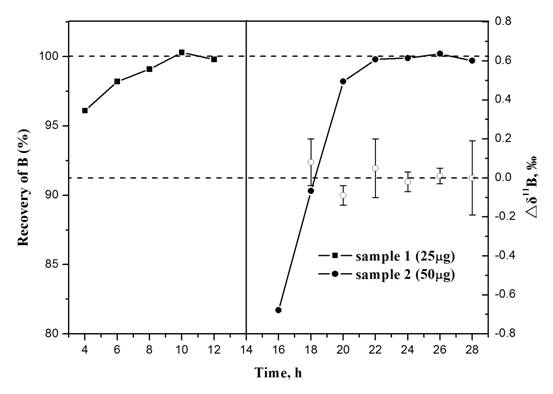Organic impurities usually reduces signal intensity during thermal ionization mass spectrometer analyses and sometimes results in isobaric ion interference when determining boron isotopic ratios. Over the past decades, most geologists have used several pre-treatment precedures prior to isotopic analyses to eliminate allochthonous organic and inorganic particles attached on the sample shells. The techniques used to separate boron from organic matter include ultraviolet irradiation; the use of organic-matter-specific resins, activated carbon, or hydrogen peroxide and bleaching with sodium hypochlorite (NaClO) combined with sodium hydroxide (NaOH). None of these attempts has been completely satisfactory.
Dr. He Maoyong of Institute of Earth Environment, CAS and his group used micro-sublimation technology coupled with routine ion exchange purification steps effectively eliminate the organic matter not only in the sample but also brought by the resin itself. This combined technologyis expected to be used for boron isotopic analyses of seawater, corals, pore fluids, foraminifera, rivers, and other natural samples in the future to effectively avoid the organic matter interference.

Relationship between the micro-sublimation time and the recovery rate of B
Related paper entitled “Effective elimination of organic matter interference on boron isotopic analysis by thermal ionization mass spectrometer: Ion exchange combined with micro-sublimation technology” by He M Y,et al., is published in Rapid Communications in Mass Spectrometry (2011, 25(6): 743-749).
 © 2015 Institute of Earth Environment,CAS
© 2015 Institute of Earth Environment,CAS Address:No. 97 Yanxiang Road, Xi'an 710061, Shaanxi, China

 Location :
Location :